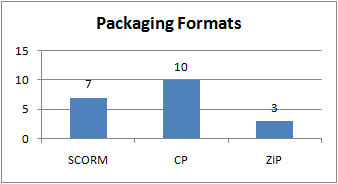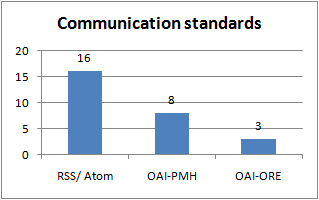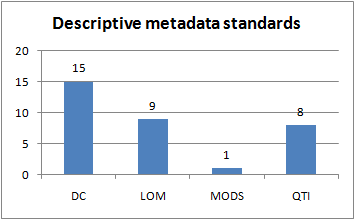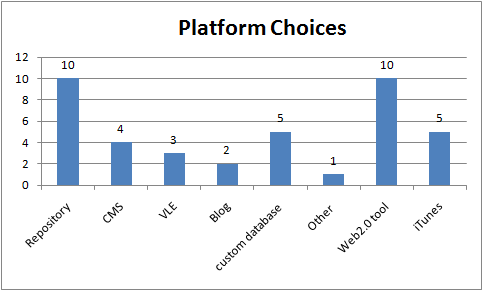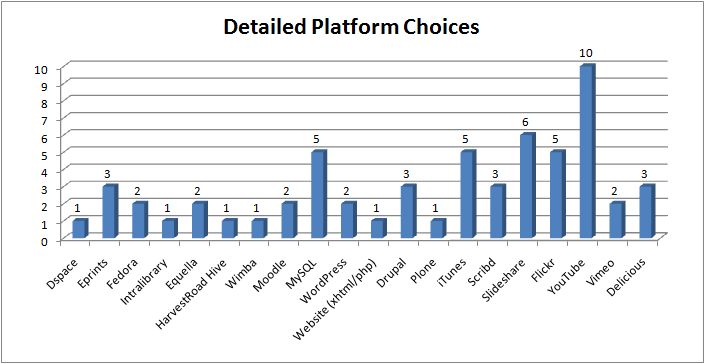As mentioned in my last post before the second UKOER programme kicks off I’ve been reflecting on the context of the UKOER programme, and some of the issues that cropped up around how to talk about or define what we were doing. The issues emerged in the context of the diversity of the programme itself but were also informed by some specific posts and conversations that have encouraged, prodded, or kicked me. My first post addressed the differences between RLOs and OERs. This one looks at the relationship between the open release of resources (OERs) and Open Education. A note – this is more of a personal perspective, more of a work in progress (as evidenced by its length), and less conclusive.
Stimuli
- The Cape Town declaration on Open Education
- There have been various blog posts recently offering a critique on the focus in OER-related work on releasing resources and the fact these efforts are potentially a distraction from promoting Open Education (from a variety of perspectives). see for example
- Perhaps the opposite view of those critiques is Bill Gates’ recent comments about OERs replacing traditional institutions in the next five years see for example TechCrunch.
- Recently I’ve learnt a bit more about P2PU -their school of webcraft is about to kick off it’s first cohort of students.
- I’ve also noted the emergence of support structures around using OERs for learning: Open Study [i’m not clear how it is currently funded] and a commercial venture M[something].
- an open education primer
- Amber Thomas shared a fantastic video about management, productivity, and creativity http://bit.ly/dyikz8
I’m very aware that there’s a lot of the wider discussion around the relation of Open Education and OERs that I’ve not had time to follow up and engage with fully, but I’m trying to pin down something of what I think and why (in part because every other blog post I’m trying to write relies on it to some degree and also I’d like to provide a point of reference for the new UKOER projects) – so if you think there’s any key thought-provoking posts or papers I’ve not mentioned feel free to add the to the comments (e.g. I’ve not engaged with David Wiley or Stephen Downes (in particular the recent MOOC work with Downes and George Siemens http://openeducationnews.org/2008/07/30/mooc-massive-open-online-course/ )
Opinion
I think:
- The release of OERs and efforts to promote Open Education are both good things.
- There is a lot of conflation between OERs and Open Education. This is a bad thing.
Compared to the extensive, philosophical and critical analyses that are ongoing the above statements are perhaps simplistic but they’re a point to start the conversation.
As a rough approximation (to inform discussing the points above) education involves:
- assessment
- accreditation/certification
- community
- interaction
- feedback
- access to expertise
- access to other facilities and resources.
In the context of tertiary education these things are provided (at least in theory) through colleges or universities, most often, though not exclusively, through enrolment on a course and physical presence at a campus. In continuing education and lifelong learning (whether post secondary or post tertiary) there are more diverse patterns (for example: professional exams, learning for fun, skills training). There are many factors affecting the ability of students to participate effectively in education, these include: motivation, personality, available time and schedule, availability of space on courses, finance, location, and other commitments. This consideration of education and some of the factors influencing how as learners we interact with it if certainly not complete but is needed in some form to consider the distinctions between OERs and Open Education.
OERs are a form of Open Content. I think that in itself is a good and useful thing, but more specifically the release of openly licensed educational content benefits learners, teachers, and institutions. For example see the infokit section on benefits of OERs https://openeducationalresources.pbworks.com/Stakeholders-and-benefits. In the context of institutions OER present a clear way to manage your content, support your students, and promote your ‘brand’ (both in the marketting sense and in the wider student recruitment sense). Phil Barker’s recent Open and Closed Case makes this point well.
OERs are but one part of the wider Open Education picture – they will only have a limited impact on the demand for access to education and wider opportunities to learn. Yes, as Bill Gates points out, you can have access to lectures from the ‘best’ institutions in the world on the web and for a few people that will be enough to help them learn what they need to but it’s incredibly odd to suggest that this in itself will change education – for centuries people have had comparable access to knowledge and text books in libraries, and more recently through television (Open University Course or comparable public access broadcasting) – the internet may change the degree to which materials are available, the volume and diversity of materials, and greatly improve the flexibility of access to those materials but historically I’d suggest access to materials in themselves has had only a limited impact and ‘online content’ doesn’t -in terms of education- necessarily change things that much.
In the bigger picture things change if the available openly licensed content begins to make the process of creating / remixing easier for lecturers and when we see the emergence of complete courses or textbooks using OER. There’s still a lot of questions around reuse but at OCWC 2010 in Vietnam last May it was clear that there’s a lot of countries wanting to use OERs to reinvigorate their university teaching and help their systems adjust to changing demand – whatever the issues around this approach it appears to be happening [I’d note in passing that although we’ve got some tools and techniques for increasing the amount of and access to Open Content I’d suggest it’s not a solved problem – the release of Open Content for education is not currently embedded widely across institutions, there remain massive questions about appropriate technology and discoverability, and subject coverage in depth is patchy at best].
The bigger question is what new forms of education can and will emerge in response to:
- the numbers and needs of learners
- the wider availability of content
- the affordances of online and /or blended interaction
There are emerging examples of new practice:
- testing and accreditation only colleges (e.g. Western Governors University)
- the Massively Online Open Courses being run by Downes and Siemens
- ‘Open Study’ and other study support services
- P2PU – offering its school of webcraft and beginning to look into proficiency ‘badges’
- digress.it [ ok not exactly new practice but one tool to to translate existing practice that I’m excited about]
I wouldn’t like to hazard a guess as to how these might mature but they offer ways to put together some of the pieces.
I know that many thinkers around Open Education there’s a degree of skepticism and frustration around institutions and their interaction with OERs as well as a desire to see them radically changed or abandoned. There is certainly a need for change, and there are essential questions to be asked around scale, models, costs, and funding – but I think institutions are here to stay in some form and I think sustainable open education needs them to be there for a number of reasons (which I ‘ll outline below). Where Open Education has the opportunity to revolutionise learning and make the biggest difference to the world is on the edges – creating alternative approaches and methods of education, widening participation and opportunity even as proportionate access to traditional formal education is likely to decline (patterns of living, costs, scale, perceived relevancy).
So why do I think institutions are so important for Open Education?
- Institutions releasing OER provide building blocks for Open Education (not perfect, not finished, but components)
- Institutions can operate at a a scale that affords the provision of particular facilities and resources which would not be otherwise feasible – the provision of these potentially enables some forms of wider open access to them (remote experiments for example).
- Institutions provide jobs to people with expertise and experience who may be able to involved in Open Education
In particular, the short film about creativity (shared by Amber) accidentally captures part of why I think institutions are key to promoting Open Education. The whole animation should be required viewing, but the key part of it for this discussion is around the 5 minute mark – the economist speaking talks about motivation and mentions the point of “when you pay people enough money to take the issue off the table” it then discusses the motivations that kick in: autonomy, mastery, purpose. I think understanding the discussion of autonomy, mastery, and purpose are really important for open education, but the taking the money off the table issue is a critical – note: the amount of money isn’t the question) – without institutions, what do open educators do for their day jobs?
I’m wary of being stuck in accepted patterns in thinking about this – as many people develop, maintain, and share expertise, in areas outside of, and disconnected from, their employment; and some people devote themselves selflessly to various causes for little reward – but, this doesn’t scale and from what I can tell a lot of currently successful Open Education (not connected to IT) is driven by academics who are paid to teach, to research, and for their expertise (yes there’s grant funding too, but it’s neither sustainable nor scalable). Without institutions there’s a big hole in this picture.
